Read the original article: Camera Comparison: iPhone 12 Pro vs. iPhone 11 Pro
Apple last week released the iPhone 12 Pro, which is being sold alongside the iPhone 12, 12 mini, and 12 Pro Max. The Pro Max has the best camera of the bunch, but since it’s not out yet, we thought we’d take a look at the improvements introduced in the iPhone 12 Pro and see how camera quality compares to the iPhone 11 Pro.
The iPhone 12 Pro has the same triple-lens camera setup as the iPhone 11 Pro with a Wide lens, Ultra Wide lens, and Telephoto lens, but there are improvements across all three cameras plus the addition of the LiDAR Scanner, which improves low-light performance. The faster A14 chip and new image signal processor also bring new photographic capabilities, ultimately introducing quite a few improvements.
TrueDepth Camera
When it comes to the front-facing camera, it’s still using the same f/2.2 12-megapixel lens with no real improvements to the hardware, but thanks to the A14 chip, it now supports Night Mode selfies, Night Mode time-lapse videos, Deep Fusion, Smart HDR 3, and Dolby Vision HDR video recording, none of which are available in the iPhone 11 Pro.

Deep Fusion’s addition to the front-facing camera allows it to pull out the best pixels from multiple exposures to make one crisper image with more detail and less noise, and it primarily activates in medium lighting conditions.
Smart HDR 3 improves highlights, shadows, and white balance so you get more natural lighting that looks truer to real life, and Dolby Vision HDR recording lets you record and edit HDR video from the front-facing camera for selfie videos that look better than ever.
In practice, you need specific conditions to see the improvements that the software brings to the front-facing camera, and so you might not always see huge differences between the 11 Pro and 12 Pro, with most changes being subtle. Night Mode selfies are where you’ll see the most noticeable updates.
Rear Camera Improvements
Smart HDR 3 and improved Deep Fusion have also been added to the rear cameras of the iPhone 12 Pro, plus there’s a new 7-element Wide lens with an f/1.6 aperture that lets in 27 percent more light for improvements to low-light photography.
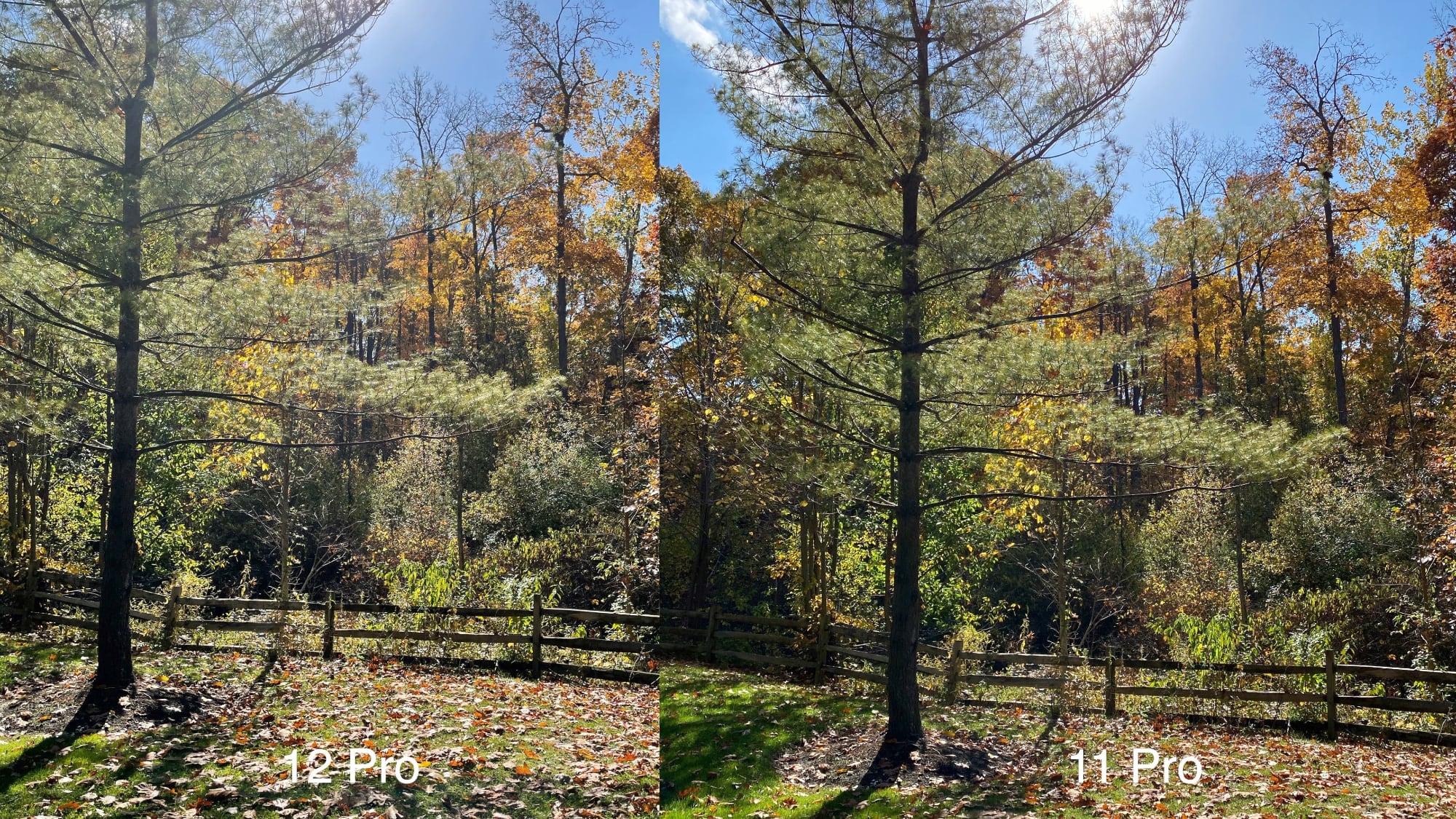
Auto stabilization is improved, and there’s a new f/2.0 telephoto lens with a 52mm focal length, and while the Ultra Wide lens hasn’t changed, it does offer a Lens Correction feature to account for distortion that can come from a wider-angle lens, and it supports Night Mode thanks to the LiDAR Scanner. Deep Fusion works across all lenses for improvements to color and texture, and Smart HDR 3 includes scene recognition that allows the iPhone to recognize everyday scenes and adjust accordingly to make photos look more true to life.
Pictures in Ideal Lightning
In practice, standard photos in good lighting from the iPhone 12 Pro look fantastic, and Smart HDR 3 does an excellent job with white balance and preserving important image details for photos that look crisper and slightly more realistic than those that come out of the iPhone 11 Pro. The new lens ekes out a bit more sharpness and detail by cutting down on noise and getting a better balance between varying lighting in photos.
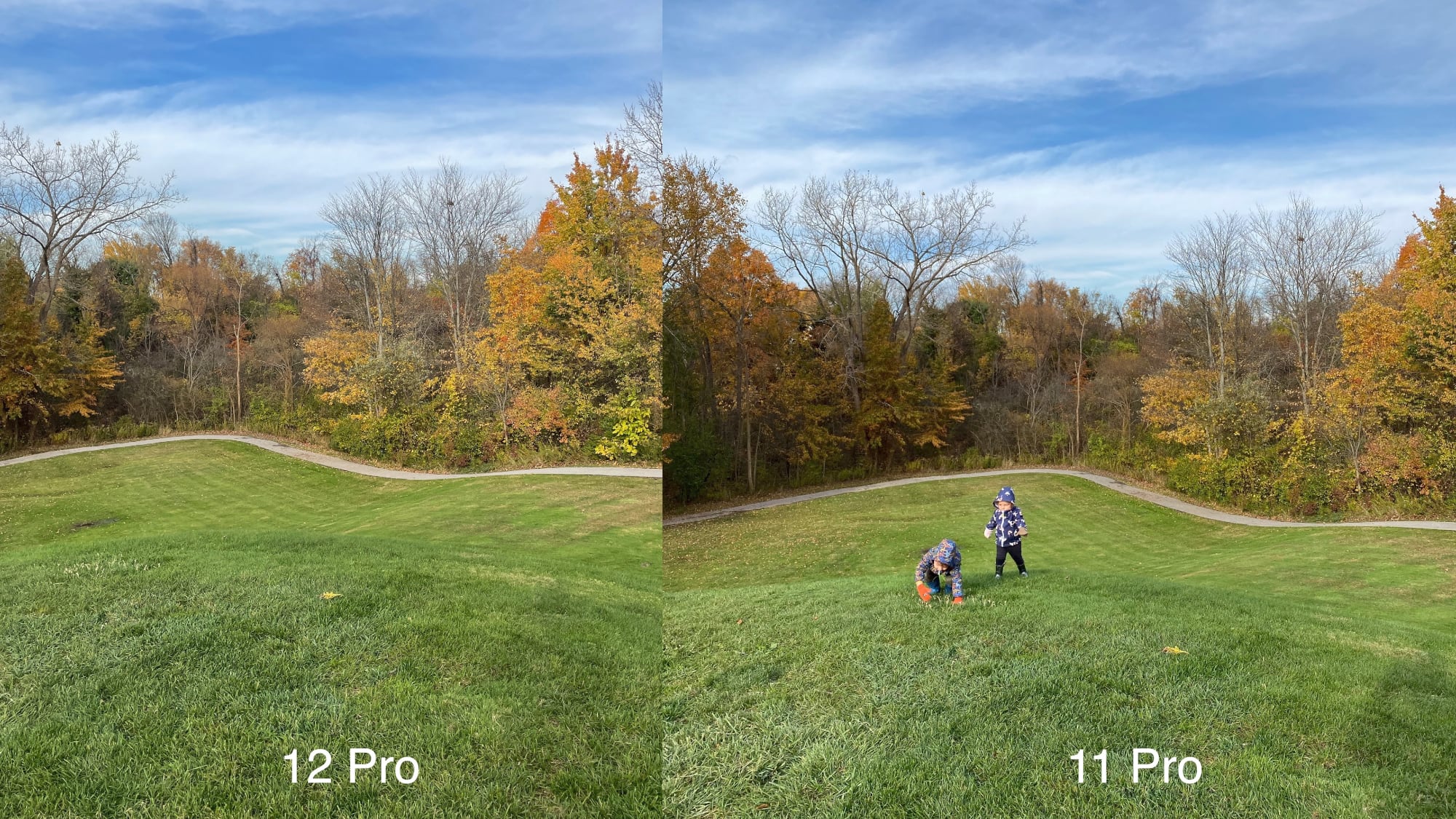
While images do look a little bit better out of the iPhone 12 Pro, it’s subtle. Comparatively, photos from the 11 Pro and 12 Pro look a lot alike unless you’re pixel peeping and zooming in for detail. The iPhone 11 Pro could put out some sensational images in ideal lighting conditions, so it’s no surprise to see only subtle improvements here.
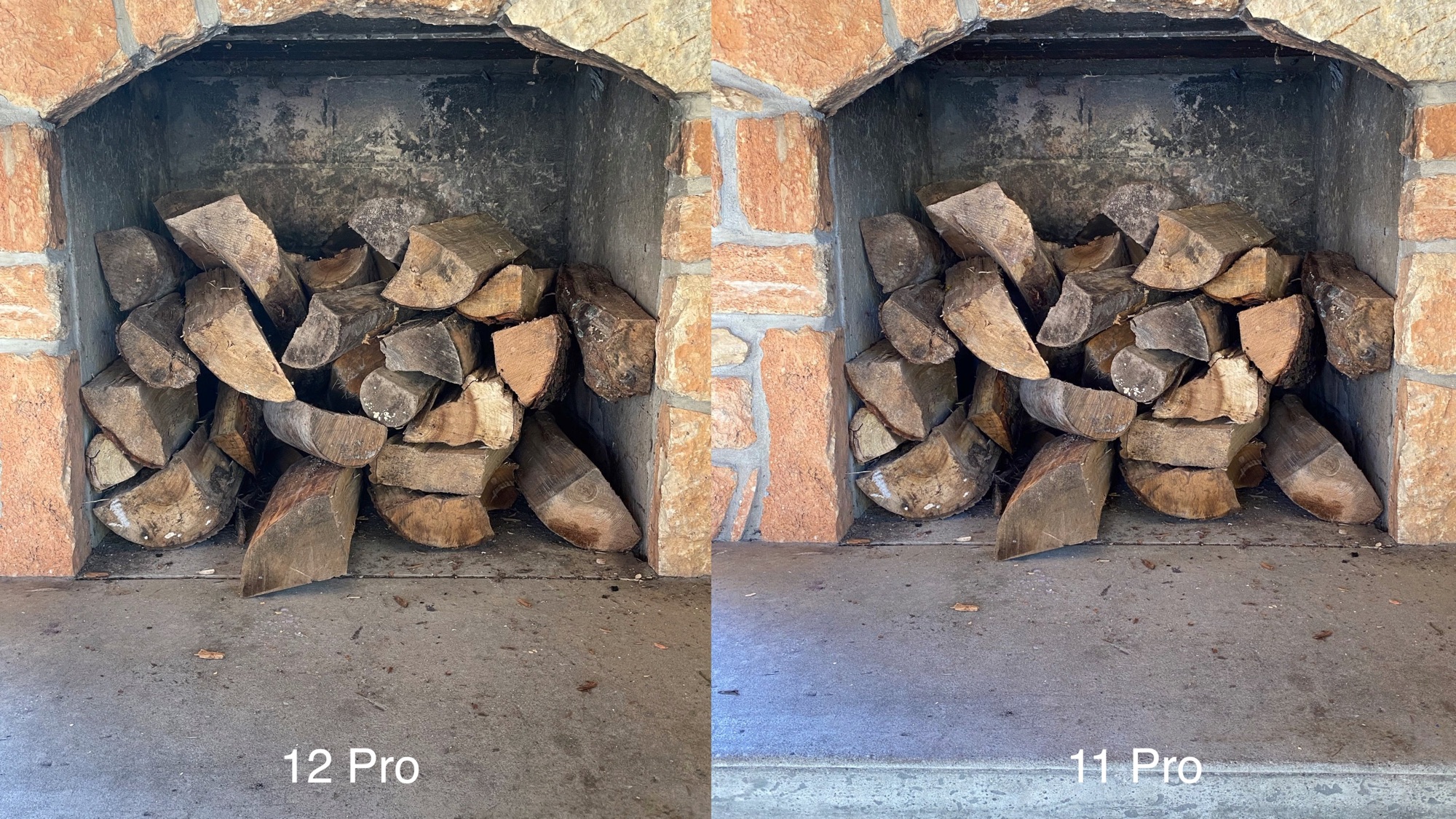
Portrait Mode Images
Apple’s A14 chip and the LiDAR Scanner (which takes a depth map of the scene) improve Portrait Mode photos by better separating the subject from the background, and this is noticeable in the fine details. Edge detection is better than before, especially for fur and hair.
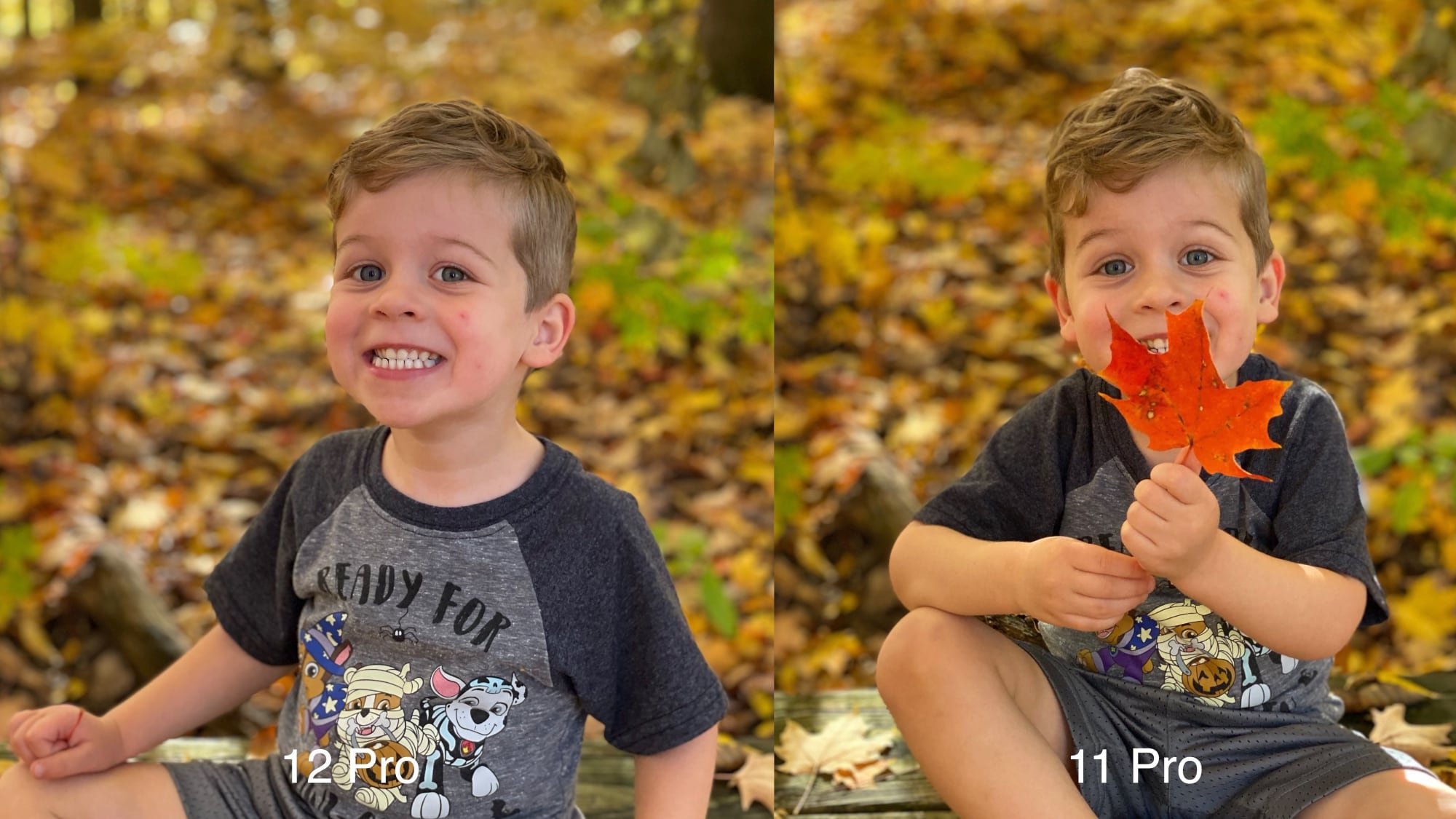
The LiDAR Scanner even allows for Night Mode Portrait images, so you can get some incredible low-light portrait shots that just aren’t possible to capture in the same way with the iPhone 11 Pro.
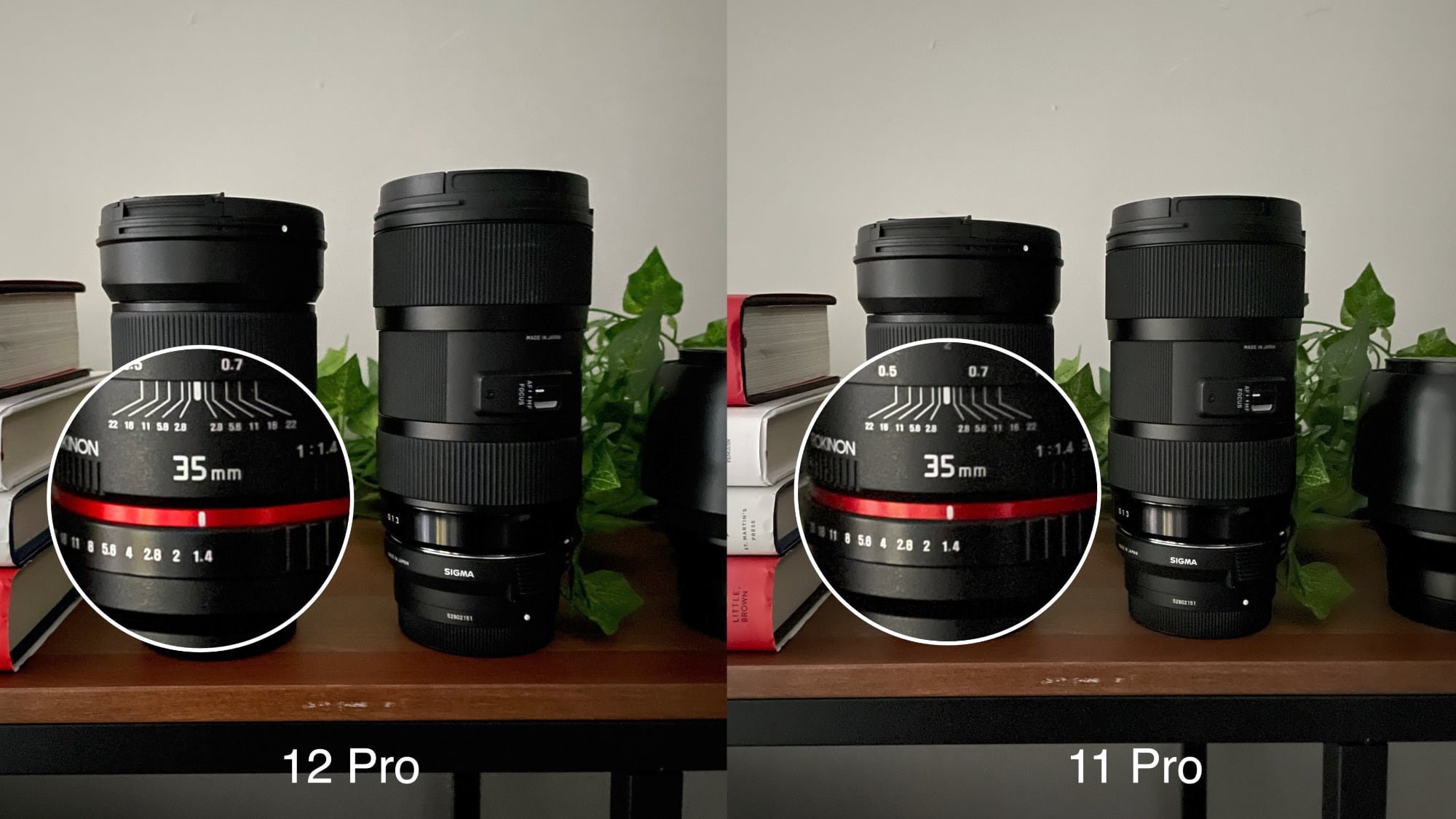
Low Lighting and Night Mode
In lower lighting conditions, there are more noticeable improvements in the photos coming from the iPhone 12 Pro, again thanks to the A14 chip and LiDAR Scanner. Night Mode photos capture more detail, are sharper, and are just a bit more vibrant.
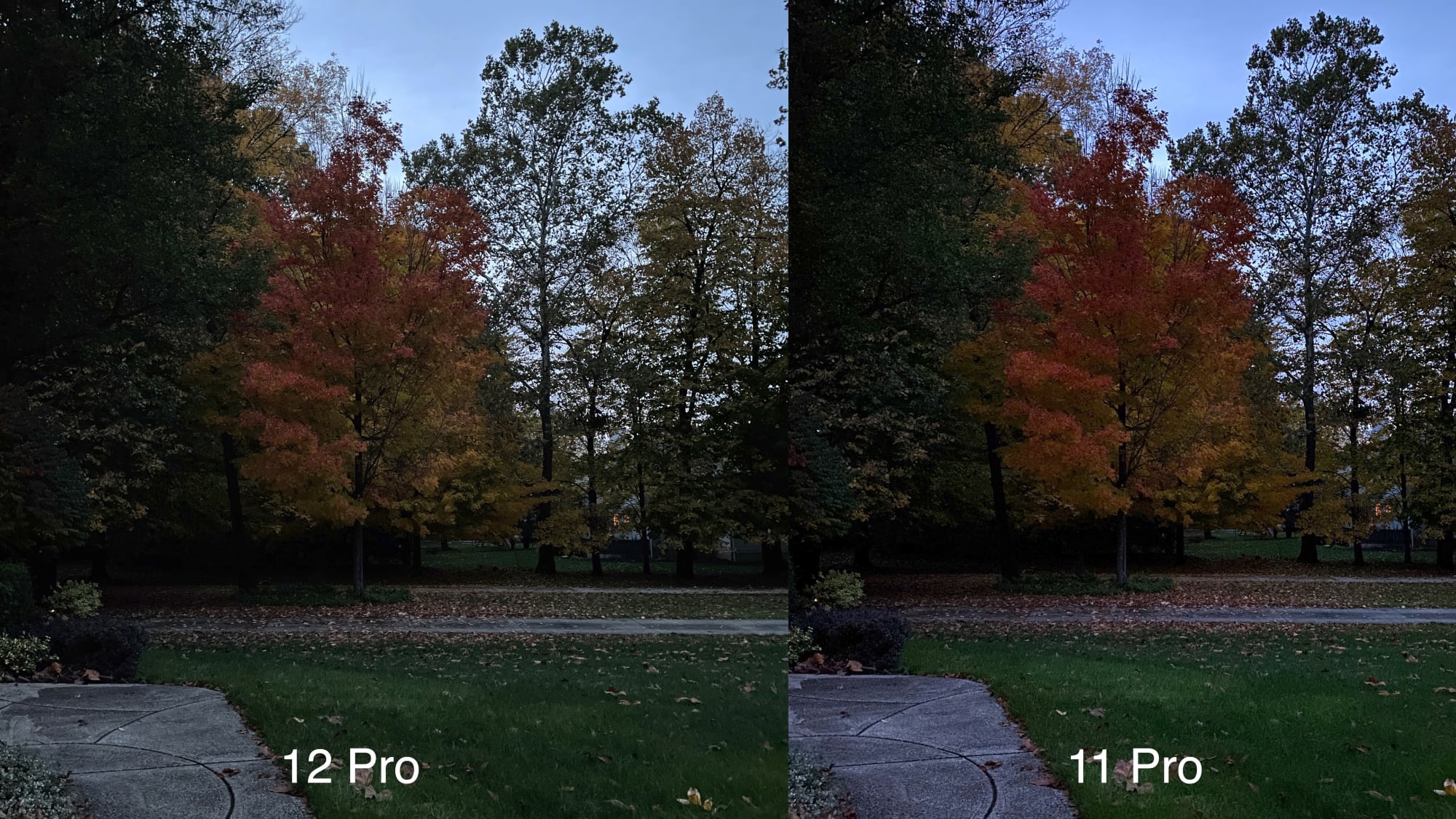
Night Mode photos can also be taken with the Ultra Wide lens for the first time, for impressive night time wide-angle shots, and LiDAR brings much faster autofocus in poor light.
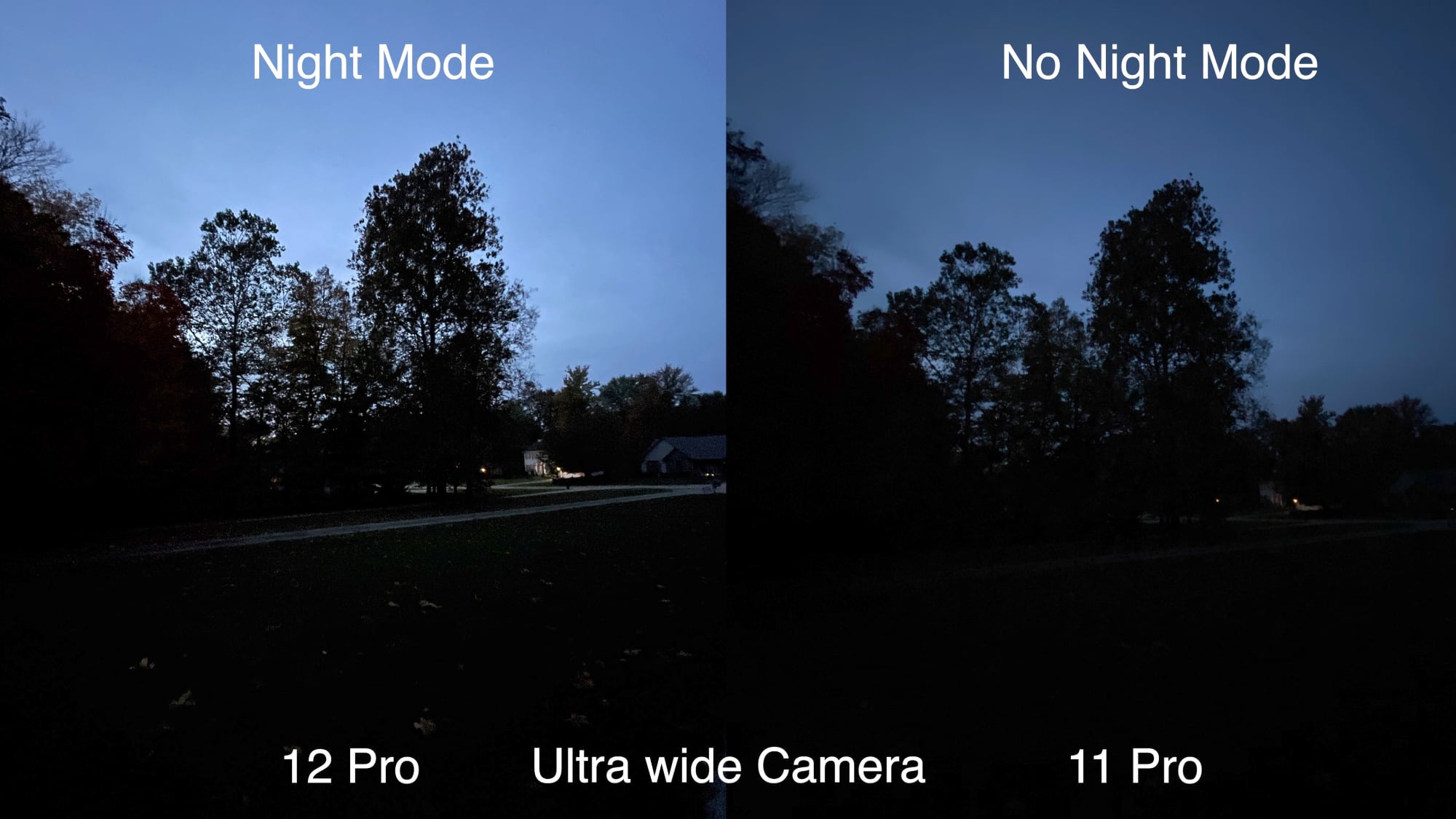
Video Capture
The camera improvements introduced for photos also apply to videos, and there are some improvements to the iPhone 12 Pro over the iPhone 11 Pro. In our testing the iPhone 12 Pro was able to focus faster because of the LiDAR Scanner, and HDR Dolby Vision is a new A14-enabled feature that’s not possible on the iPhone 11 Pro.
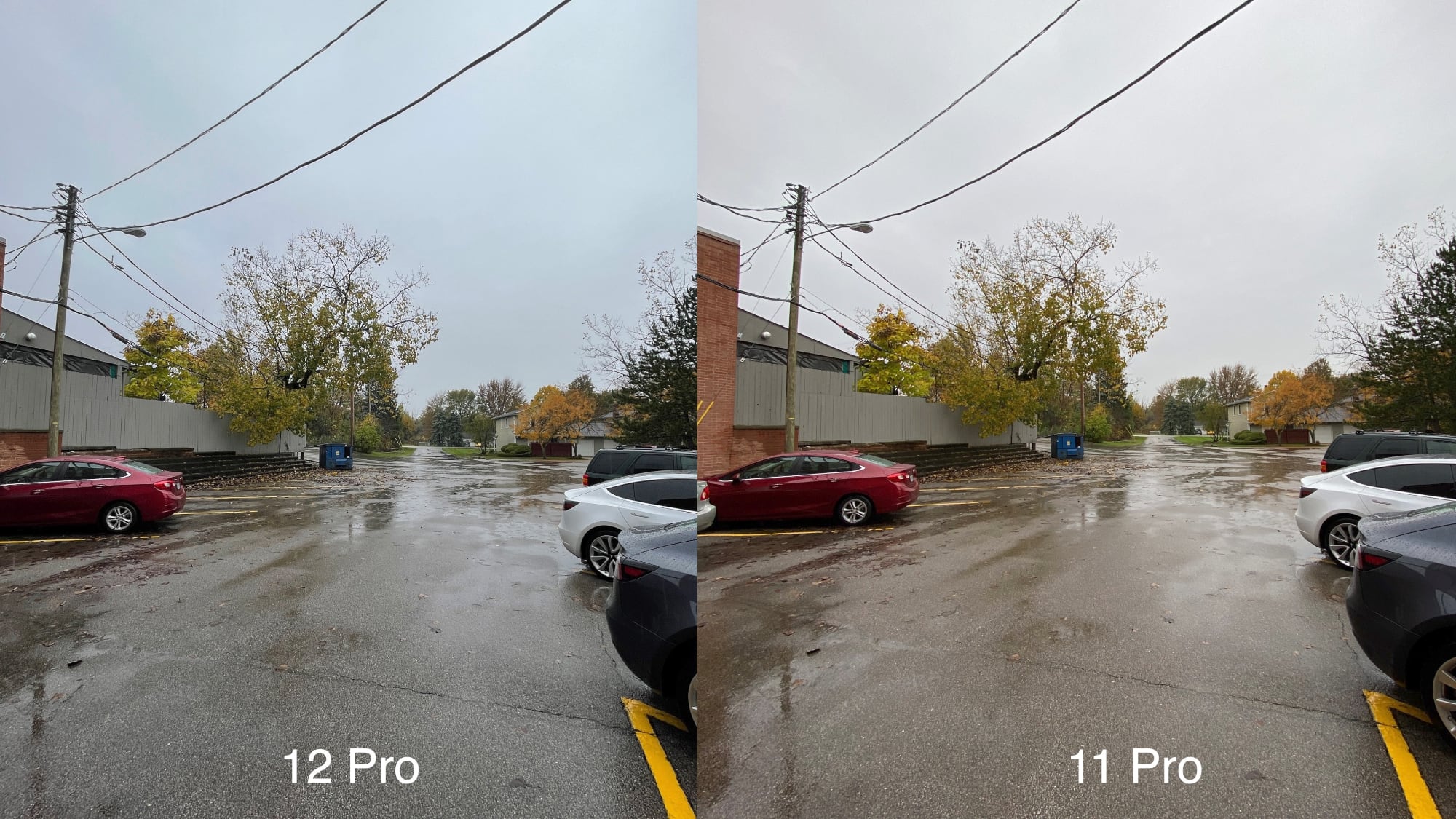
HDR Dolby Vision recording looks great as you can see in the video up above, but it’s limited right now. Video you capture is easiest to edit right on the iPhone because of a lack of Mac compatibility for editing Dolby Vision video, and playback needs to be on a Dolby Vision-compatible device like your iPhone or a Dolby Vision TV.

If you capture a video in Dolby Vision on the iPhone 12 Pro and then play it back on the iPhone it looks fantastic. Elements in the video are bright, crisp, and well-defined, but again, you need the right device to see the improvements over iPhone 11 Pro video. Dolby Vision HDR comes on by default so keep in mind video you’re recording might not look as great to someone you send it to. Dolby Vision HDR is a big deal for those who want to capture movies on their iPhones and do serious iPhone video recording, but it’s less useful for the average iPhone user.
For video mode, there’s a new Night Mode Time-Lapse option that’s fun if you want to take longer exposure night sky videos, but most people likely won’t get a ton of use out of this because it requires a tripod.
Bottom Line
The iPhone 12 Pro definitely offers camera improvements over the iPhone 11 Pro, but the differences aren’t super major except for when it comes to new features and some low-lighting photography, so camera tech alone probably isn’t a reason to upgrade except for the most dedicated iPhone photographers.
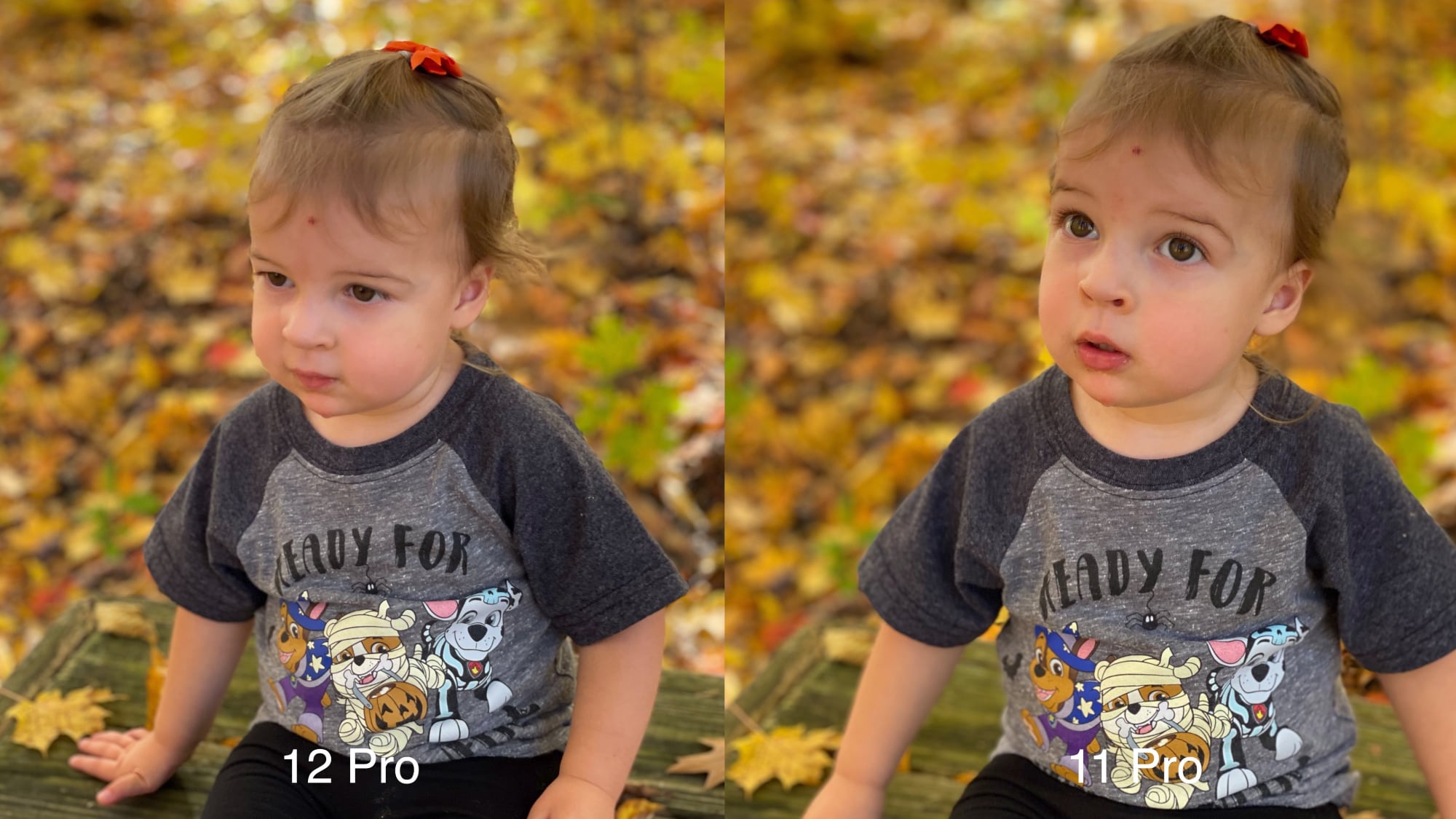
This year’s iPhone 12 Pro Max has even more improvements than the iPhone 12 Pro, so we’ll be doing another comparison when the larger model is released. Let us know in the comments what you think of the 11 Pro and iPhone 12 Pro comparisons and whether you’re seeing image improvements in your own usage.
This article, "Camera Comparison: iPhone 12 Pro vs. iPhone 11 Pro" first appeared on MacRumors.com
Discuss this article in our forums
Read the original article: Camera Comparison: iPhone 12 Pro vs. iPhone 11 Pro